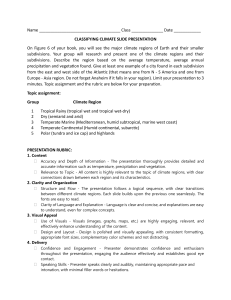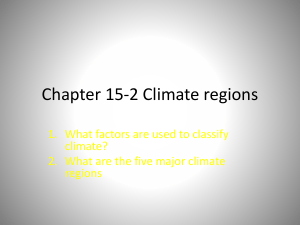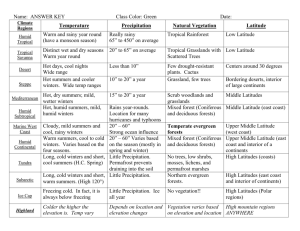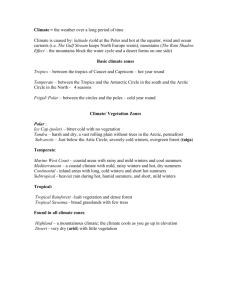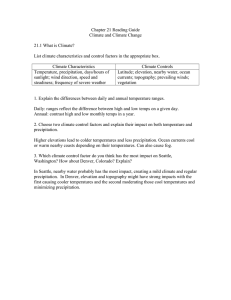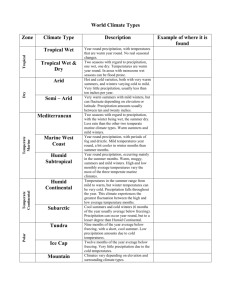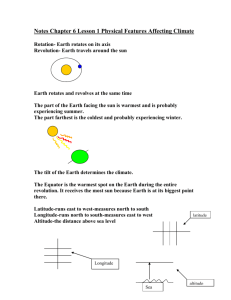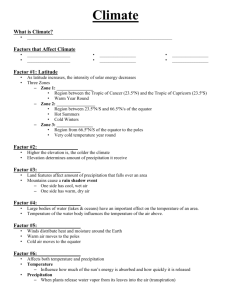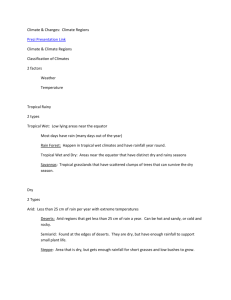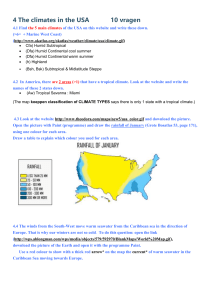Earth Science
advertisement
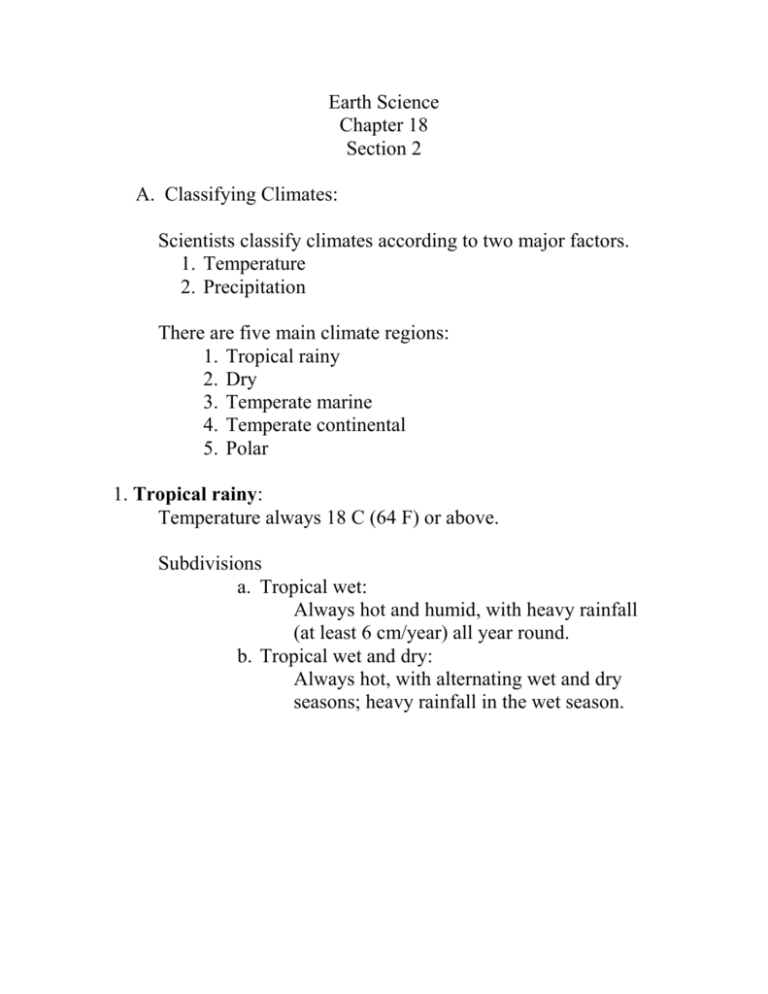
Earth Science Chapter 18 Section 2 A. Classifying Climates: Scientists classify climates according to two major factors. 1. Temperature 2. Precipitation There are five main climate regions: 1. Tropical rainy 2. Dry 3. Temperate marine 4. Temperate continental 5. Polar 1. Tropical rainy: Temperature always 18 C (64 F) or above. Subdivisions a. Tropical wet: Always hot and humid, with heavy rainfall (at least 6 cm/year) all year round. b. Tropical wet and dry: Always hot, with alternating wet and dry seasons; heavy rainfall in the wet season. 2. Dry: Occurs wherever potential evaporation is greater than precipitation. May be in hot or cold regions. Subdivisions a. Arid: Desert, with little precipitation, usually less than 25 cm/year. b. Semiarid: Dry but receives about 25 to 50 cm of precipitation/year. 3. Temperate marine: Average temperature 10 C (50 F) or above in the warmest month, between –3 C (26 F) and 18 C (64 F) in the coldest month. Subdivisions a. Mediterranean: Warm, dry summers and rainy winters. b. Humid subtropical: Hot summers and cool winters c. Marine west coast: Mild winters and cool summers, with moderate precipitation year round. 4. Temperate continental: Average temperature 10 C (50 F) or above in the warmest month, -3 C (26 F) or below in the coldest month. Subdivisions a. Humid continental: Hot, humid summers and cold winters, with moderate precipitation year round. b. Subarctic: Short, cool summers and long, cold winters. Light precipitation, mainly in summer. 5. Polar: Average temperature below 10 C (50 F) in the warmest month. Subdivisions a. Tundra: Always cold with a short, cool summer, warmest temperature about 10 C (50 F). b. Ice Cap: Always cold, average temperature at or below 0 C (32 F). 6. Highlands: Generally cooler and wetter than nearby lowlands, temperature decreasing with altitude.
